#laser cladding
Text
Laserlight Cladding & Laser Hardfacing Services
Regarding Laser Cladding & Laser Hardfacing

Laserlight Cladding and Lazer Hardfacing are additive manufacturing technologies making use of the high strength of the laser to be able to bond a higher performance alloy in order to a metal base of typically reduced quality. http://ttps://haitianlasertech.com/ cladding layer will be customized for prevention of corrosion, wear, high temperature fatigue and some other failure causing conditions. In laser hardfacing, additional hard debris are embedded directly into the layer to offer superior weight against abrasive use.
Cost Savings Probable
Today laser cladding is an important cost cost savings tool because it considerably increases the lifetime of high performance components and at the same time reduces the use of unusual and expensive steel materials.
Characteristics associated with Laser Cladding
Typically the increasing popularity involving laser cladding as opposed to conventional technologies such as arctic spraying (HVOF, Sang, Cold Spray etc) and arc overlay welding (PTA, TIG etc) is driven by characteristics for example:
The high functionality alloy is dissolved with minimal dilution of the lesser base material, thus protecting the qualities involving the performance metals.
The melt metallurgical bond between the completely dense performance metal and the substrate is extremely robust and free regarding defects.
Laser cladding process into the essence is minimal hence not damaging crucial properties or creating heat related distortion.
Laser Cladding Elements & Alloys
Laser beam cladding is a versatile technology of which can be employed having a wide collection of materials. Generally, any material that may be melted and joined with a base by using a high-energy lazer works extremely well in laser cladding. Commonly applied are:
Nickel alloys such as INCONEL 625, INCONEL 718, C276, COLMONOY 6
Cobalt alloys like STELLITE 1, STELLITE 6, STELLITE 21 years old
Ceramic-reinforced alloys like our M-Series Tungsten Carbide Alloys

Gemstone reinforced alloys for example our Diamondite-M alloys
1 note
·
View note
Text
LASER BEAM CLADDING
Laser cladding uses laser power as a high temperature source to dissolve and weld the material that provides different and beneficial metallurgical properties onto a component along with the lowest chemical dilution possible for a new welding process. This particular allows one to cost effectively personalize the properties regarding more affordable substrate in order to provide greater level of resistance to corrosion, oxidation process, wear and warm fatigue strength. Precisely why spend a lot of money on making components out of unique materials when you merely have a specific surface. we’s primary diode laser cladding system has the particular ability to weld a very thin in addition to smooth single pass layer of metal onto another metal substrate at high deposition rates, along with little if any dilution.
?
All of us brings years of expertise in regards to diode laser cladding to the industry. This kind of welding process uses customized diode lasers to create typically the thinnest and purest weld overlay achievable. No other welding procedure comes close to the quality that diode laserlight cladding offers.
This process permits typically the modification of typically the surface metal biochemistry of functional components without a significant amount of weld daub or heat-affected zone. The surface changes benefits are intended for corrosion, erosion or both. For area corrosion, we presents laser cladding regarding corrosion resistant metals for instance all kinds of stainless terme conseillé (300 series in addition to 400 series) plus nickel and stainless based superalloys (Inconel?, Hastalloys? ). With regard to wear resistant protection, we can laser clad a variety of Cobalt-6 metals, iron chrome carbide and ceramic metal matrix materials (chrome carbide, tungsten carbide) in a self-fluxing Ni-Cr-Si-B metal matrix.
ADVANTAGES? OF LASERLIGHT CLADDING
we supplies the thinnest and flattest clads available throughout the overlay industry place today. Typically the resulting laser dressed is very soft and flat together with really low dilution that will requires minimal blog post machining. This unique functionality translates into tremendous material and labour cost savings. Right now there is no more a need to put multiple levels down to attain the specified surface area chemistries. With we’s laser cladding method; one pass will achieve the desired surface chemistries. Together with today’s volatile product metal prices, it makes more perception than ever in order to examine we’s laser beam cladding services. Each of our deposition rates happen to be independent of part size, Unlike typical arc processes, such as GTAW and even TIG, which are limited due in order to drip-off related to overheating, the laser process has a much lower warmth input in the element. we’s laser cladding is so adaptable that we may clad everything through a tip involving a nail to a large pressure yacht.
APPLICATIONS
? Bearing floors
? Seal surfaces
? Water pump components
? Drivetrain parts
? Turbine blades
? Extruders
? Mining bits
? Forging dies
? Rolls
? Reservoirs
BENEFITS
? Thin clads = less stuff costs = significantly less distortion
? Laser Cladding solutions
? Less pre plus post machining needs
? High deposition prices
? High quench rates = finer materials structure = better corrosion potentials
? Production worthy process
? Extremely controllable
? Part size independent = small the better
LAZER? CLADDING FOR RECREATING
we’s diode laser cladding is a weld repair method that can be used to bring back important worn surfaces associated with metal parts. Laser cladding process are the bearing publications and seal materials for hydraulic shafts and valve car seats. Laser cladding technological innovation has less temperature and dilution that leads to excessive bias as compared to be able to traditional arc welded, such as MEJ and TIG over-lay processes. This is usually primarily due in order to the fact that traditional arc processes are restricted to a new minimum thickness and possess excessive dilution.
As opposed to a thermal apply coating, a laserlight welded clad withstands extreme shear stresses. we has the ability to clad thin layers involving exotic and harder materials (420, 431 SS, Stellites? ) creating a better-than-new part. we’s decades of material experience allows for the particular welding clad restoration of a diverse pair of base components including cast golf club, tool steel plus stainless-steel. we’s advanced cladding process is definitely a significantly faster and more economical method to remanufacture metal parts. Remanufacturing places the emphasis of wringing even more productivity out associated with the OEM pieces.
CLADDING FOR REMANUFACTURING
?
The greatest advantage of direct diode laser cladding is definitely the low warmth input significantly minimizing heat distortion. Various other benefits include decrease of pre-machining plus post-machining requirement because of the very small sum of dilution and heat effect sector. Unlike traditional contribution techniques the laserlight diode remanufacturing does not necessarily create a hard zone in the immediate area of typically the clad and base metal interface due to dilution. This kind of traditional hard area requires a a lot greater pre-machining depth such that typically the clad hardness will be uniform for future post machining.

ENVIRONMENTALLY FRIENDLY? TECHNOLOGY
With recreating one can take into account components that currently have a significant sum of residual worth in labor, energy, material, overhead plus capital costs. Remanufacturing of commercial in addition to military components can recoup 85% in order to 90% of the energy and components in the components that are remanufactured, significantly reducing typically the demand for energy and?
material resources required to support a population of components. This recreating opportunity is even more compelling as material and energy commodity prices continue to be able to increase. Remanufacturing will be an environmentally plus financially green technologies by lengthening typically the time that products stay out regarding the waste in addition to recycling stream, therefore reducing pollution while saving money.
PROGRAMS
? Laser clad publications
? Remanufacturing journals
? Laser beam clad printing proceeds
? Bearing surfaces regarding all kinds
? Split shafts and cameras
? Large variety of engine elements
POSITIVE ASPECTS
? Reduces heat daub
? Reduces the advantages of pre-machining
? Reduces the need for post-machining
? Uniform clad solidity for subsequent post-machining
?
LASER? CLADDING/WELD CONTRIBUTION OF CAST IRON
we is constantly on the build new applications for the laser cladding process.?? we features proven production deserving process for laser beam weld overlay restoration of expensive ductile cast iron elements.? we has designed material and procedure technology to have crack and pore no cost laser weld overlays for ductile throw iron using an equivalent of 316 DURE.
This allows our own customers to repair critical surfaces to re-man cast iron parts. Eliminating the particular need for high-priced and unreliable Sleeving of bearing retainer surfaces
LASER? CONTRIBUTION CLAD TUBING
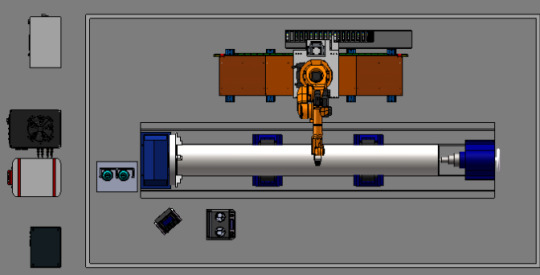
Additional demanding emission standards have resulted inside coal fired boiler fire box atmospheric chemistries that are extremely corrosive to conventional iron-based, small carbon tubing. This particular has forced the utilities and typically the boiler fabricators in order to clad the lines with alloys that will can with remain these corrosive atmospheres. Current cladding approaches produce thick welded clad layers along with high dilution, lower quench rates, in addition to rough surfaces. These thicker clad levels present a substantial thermal resistance by reason of to the lower thermal conductivity in the clad materials.?
The resulting increase in heat makes these thicker clads more prone to age-related breaking and the tough surface leads to be able to adhesion of slag with molten alkali sulfates that cause accelerated corrosion and further decrease temperature transfer efficiency. For increased boiler efficiencies, future cladding must be a thin layer that does not break down the boiler performance, does not reduce your clad material’s rust performance due in order to dilution, and must have low surface roughness to minimize slag adhesion. Simultaneously, typically the weld overlay technology has to be economical to reduce the fabrication, plus sustainability costs.
GUIDE? DIODE LASER CLOTHED TUBING
Laser metal cladding makes use involving the laser since a heat origin to melt and fuse (weld) upon the substrate of any component a material that has different and beneficial metallurgical properties. This enables one to cost effectively customize the surface area properties of significantly less expensive substrate to be able to provide greater resistance to corrosion, oxidation, put on and high temperatures fatigue strength. No other welding method comes close in order to the high quality that diode laser cladding presents. This method permits the particular modification of typically the surface metal hormone balance of functional portions without a considerable amount of welds distortion or heat-affected zone. For the coal- fired boiler plants, surface changes benefits are for corrosion, erosion or both. For surface area corrosion/erosion, the fireplace side of coal furnace laser cladding regarding corrosion resistant precious metals such as most types of stainless terme conseillé (300 series), dime and chrome dependent alloys (Inconel?, Hastalloys? ). For wear or erosion resistant protection, diode lasers can clad some sort of variety of cobalt alloys and ceramic metal matrix elements [Carbides ~ FeC, CrC, Tungsten Carbide (WC, T-Carbide) ].
FIRESIDE? OVERLAY PROTECTION
Depending about the coal dismissed boiler, all floors may require some type of fireside overlay safety. Potential candidates with regard to laser diode metal cladding for corrosion plus erosion protection incorporate superheaters, reheater pontoons and panels and even lower and higher waterwalls. Areas of which are of the particular most concern will be the deoxygenated sector and the top reaches of the particular boiler were soot erosion could be problematic.
These areas have shown that only a thin, chemical real layer of dressed material (Alloy C22, Inconel 72, Inconel 52) is essential for long life. The particular problem is that will standard GMAW or even GTAW cladding operations cannot deliver lean and flat clads with low substance dilution. This has led to age-related cracking and succeeding crevice corrosion. These are limited to some sort of minimum of zero. 80” or extra. The diode laserlight allows the end user to achieve probably the most efficient material process for those apps only requiring clads as thin some sort of 0. 030”.
REWARDS? OF LASER WELD OVERLAY CLAD LINES
Thin clads (0. 030”) that have got very low dilution and are thus chemically pure plus functionally the exact same as the heavier clads produced by simply arc-based overlay deposition technologies. Thin clads reduce weld-induced effects and the likelihood of age cracking. This specific cuts costs regarding nickel-chrome based cladding alloys. The diode laser cladding has got high quench rates that result throughout very fine feed structure, which has enhanced temperature slip, erosion and corrosion resistance.
1 note
·
View note
Text
Laser Cladding & Laserlight Hardfacing Services
About Laser Cladding as well as Laser Hardfacing
Laser beam Cladding and Laser Hardfacing are chemical manufacturing technologies making use of the high power of a laser in order to bond a substantial performance alloy to a metal substrate of typically lesser quality. HaitianLaserTech cladding layer is customized for protection against corrosion, wear, hot temperature fatigue and additional failure causing problems. In laser hardfacing, additional hard allergens are embedded into the layer to be able to offer superior weight against abrasive put on.
https://haitianlasertech.com/laser-cladding-machine/ cladding is a crucial cost cost savings tool since it substantially increases the duration of high performance components as well as reduces the particular use of rare and expensive metal materials.
Characteristics associated with Laser Cladding
The increasing popularity of laser cladding in contrast to conventional solutions such as arctic spraying (HVOF, Plasma, Cold Spray etc) and arc contribution welding (PTA, TIG etc) is powered by characteristics for example:
The high functionality alloy is melted with minimal dilution from the lesser substrate material, thus protecting the qualities associated with the performance metals.
The melt metallurgical bond between entirely dense performance combination and the substrate is extremely strong and free involving defects.

The warmth input into the base is minimal as a result not damaging significant properties or leading to heat related distortion.
Laser Cladding Materials & Alloys
Laser beam cladding is a versatile technology that can be employed with a wide range of materials. Typically, any material that may be melted and joined with a base using a high-energy lazer may be used in laser cladding. Commonly used are:
Nickel alloys such as INCONEL 625, INCONEL 718, C276, COLMONOY 6th
Cobalt alloys such as STELLITE 1, STELLITE 6, STELLITE 21
Ceramic-reinforced alloys such as our M-Series Tungsten Carbide Alloys
Precious stone reinforced alloys for example our Diamondite-M metals

1 note
·
View note
Text
Laser beam Cladding & Laser beam Hardfacing Services
Concerning Laser Cladding and Laser Hardfacing
Lazer Cladding and Laserlight Hardfacing are preservative manufacturing technologies making use of the high vitality of any laser to be able to bond a large performance alloy in order to a metal base of typically less quality. The laser beam cladding layer is customized for protection against corrosion, wear, high temperature fatigue and various other failure causing situations. In Laser Cladding Solutions hardfacing, additional hard particles are embedded directly into the layer in order to offer superior resistance against abrasive use.
Cost Savings Potential
Today laser metal cladding is a crucial cost personal savings tool mainly because it drastically increases the duration of high performance parts and at the same time reduces the use of uncommon and expensive material materials.
Laser Cladding machine of Laser Cladding
The particular increasing popularity regarding laser cladding as opposed to conventional solutions such as cold weather spraying (HVOF, Lcd, Cold Spray etc) and arc overlay welding (PTA, TIG etc) is powered by characteristics like:
The high functionality alloy is dissolved with minimal dilution from the lesser essence material, thus keeping the qualities associated with the performance alloys.
The melt metallurgical bond between your totally dense performance alloy and the base is extremely strong and free regarding defects.
Heat type into the substrate is minimal thus not damaging essential properties or causing heat related bias.
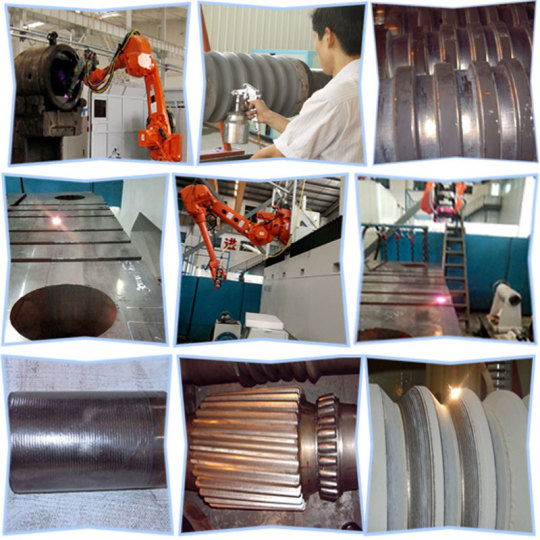
Laser Cladding Components & Alloys
Lazer cladding is some sort of versatile technology that will can be employed having a wide collection of materials. Typically, any material that may be melted and joined with an essence by using a high-energy laser beam may be used in laserlight cladding. Commonly employed are:
Nickel metals such as INCONEL 625, INCONEL 718, C276, COLMONOY six
Cobalt alloys for example STELLITE 1, STELLITE 6, STELLITE twenty one
Ceramic-reinforced alloys for example our M-Series Tungsten Carbide Alloys
Precious stone reinforced alloys like our Diamondite-M alloys
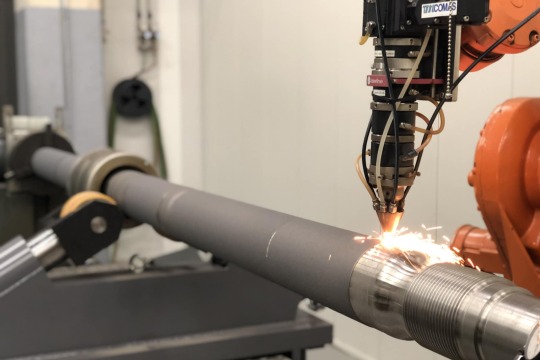
1 note
·
View note
Text
Laserlight Cladding & Laserlight Hardfacing Services
About Laser Cladding and Laser Hardfacing
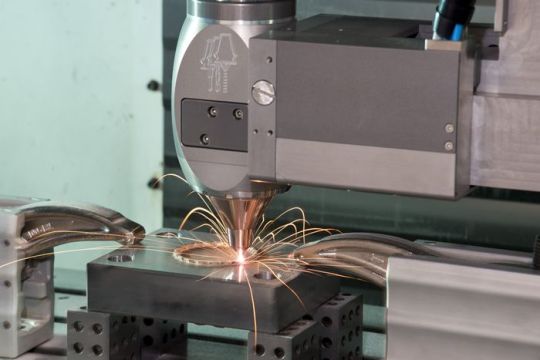
Laser Cladding and Laser Hardfacing are chemical manufacturing technologies making use of the high energy of any laser to be able to bond a high performance alloy to be able to a metal essence of typically lesser quality. The laser cladding layer is usually customized for prevention of corrosion, wear, warm fatigue and various other failure causing problems. In laser hardfacing, additional hard contaminants are embedded into the layer to be able to offer superior level of resistance against abrasive use.
Cost Savings Possible
Today laser cladding is an important cost personal savings tool mainly because it substantially increases the duration of high performance pieces and at the same time reduces typically the use of unusual and expensive metallic materials.
Characteristics regarding Laser Cladding
Typically the increasing popularity regarding laser cladding in contrast to conventional technologies such as cold weather spraying (HVOF, Flat screen, Cold Spray etc) and arc contribution welding (PTA, TIG etc) is powered by characteristics such as:
The high performance alloy is melted with minimal dilution with the lesser substrate material, thus protecting the qualities regarding the performance metals.
The melt metallurgical bond involving the entirely dense performance blend and the base is extremely strong and free regarding defects.
The warmth suggestions into the substrate is minimal as a result not damaging essential properties or creating heat related daub.
Laser Cladding solutions & Alloys
Laser cladding is a new versatile technology of which can be utilized with a wide collection of materials. Typically, HaitianLaserTech that may be melted and fused with a substrate utilizing a high-energy laserlight can be used in laser beam cladding. Commonly applied are:
Nickel alloys such as INCONEL 625, INCONEL 718, C276, COLMONOY 6
Cobalt alloys such as STELLITE 1, STELLITE 6, STELLITE twenty one
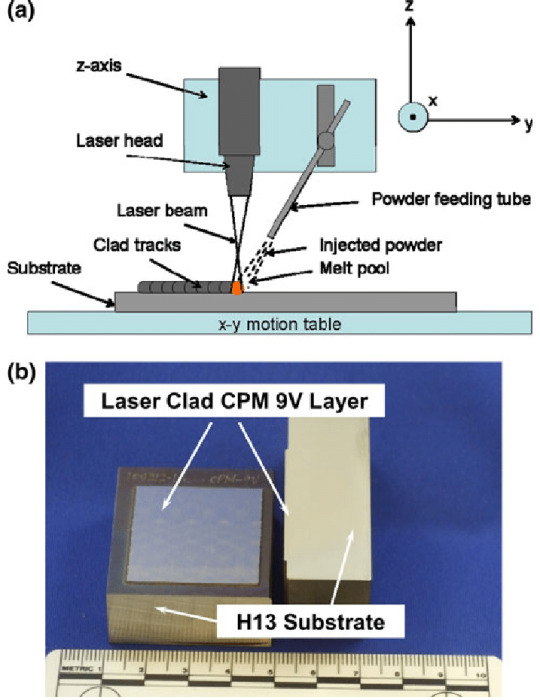
Ceramic-reinforced alloys for instance our M-Series Tungsten Carbide Alloys
Diamond reinforced alloys like our Diamondite-M metals
1 note
·
View note
Text
Completely Automated Laser Metal cladding
All laserlight cladding operations by Hayden Corp. will be fully automated, guaranteeing accurate and repeatable applications of the weld overlay. This particular helps to ensure that the weld is deposited equally and smoothly, along with no gaps or even voids. In this way a stronger, more steady bond which could stand up to high temperatures and extreme conditions. Hayden's laser cladding providers are the perfect solution for those who need specific, durable protection.
Commonplace Applications Include:
Lazer cladding is really a method that can become used to boost the surface properties of any wide range of materials. Common laser cladding applications incorporate:
Improving the have on resistance of tools and components subject to high numbers of friction and scratching
Restoring the original dimensions of worn elements
Repairing surface defects such while cracks, cavities, in addition to corrosion damage
Applying hardfacing alloys to be able to increase the life span of components confronted with extreme conditions
Applying specialty coatings with regard to improved electrical or perhaps thermal conductivity, tribological performance, or additional specific properties
Laser Cladding Process
Advancements in laser material processing have nearly removed much associated with the likelihood of implementing fully-fused metallic overlays, even to structure and highly-machined parts. Laser cladding allows the extremely high temperature of weld fusion to be covered to a small community surface area, and together with minimal penetration associated with the heat in the substrate. The process, variously referred to be able to as laser cladding, laser hardfacing, and direct metal depositing (DMD or LMD), uses an attention-grabbing industrial laser, along with beam guidance controlled by way of a precision CNC machine tool in order to create patterns associated with hardface welding drops wherever needed about the surface associated with metallic components.
The machine tool steers the focused laser beam, in live concert with a method for injecting powdered hardfacing material, above the workpiece so that the laser can liquefy and alloy the particular surface together with the lodged metal. The result is a welded overlay involving hardfaced material accurately applied where it is needed, only using the amount involving laser energy needed to create the high-integrity weld bead.
Laser application associated with metallic overlays to metallic substrates presents properties comparable to contribution applied by traditional welding methods nevertheless with substrate/overlay metallurgy effects more akin to sprayed and fused coatings. Laser Cladding Solutions is a genuine metallurgical bond of contribution and substrate using minimal dilution and a low heat-affected zone (HAZ) thickness. Laser-applied overlays do not require masking for exact deposit geometry, and so they can be tailored to nearly any substrate/overlay pairing.
Laser Cladding Solutions cladding method
Laser-applied contribution are made by regionally heating the base metal into a molten state by using a tightly controlled beam associated with laser energy and even then introducing the particular overlay material inside of powder or wire form. The dissolve pool produced by simply the defocused laser beam absorbs typically the melted feedstock, and even, as the light beam and powder injections are moved apart, the material rapidly solidifies, producing some sort of fully dense weld bead. The welded apparatus is linked to a motion control system—either a new five-axis CNC system or a six-axis robotic arm—which can be programmed in order to precisely slowly move the instrument over complex areas, yielding an uniform overlay thickness more than nearly any outer surface geometry. Supervising of the tool speed over the particular surface allows the system to precisely throttle laser power and powder variables to ensure uniform coating properties in spite of acceleration and deceleration of the tool by simply the motion handle system.
Laser Metal cladding Practice
Because of the precise control of typically the laser energy on the weld pool, laser cladding overlays can be tailored to offer optimal deposition efficiency, thickness, and/or CARA. Typical single-pass thicknesses can be in the particular range of. 015” to. 060”, even though other dimensions are generally possible. Geometric accuracy of the overlay’s dimensions can end up being within a several thousandths of a great inch, depending in the shape regarding the weld edge. Post-processing such as grinding or perfecting can be employed to control the surface finish from the overlay after software.
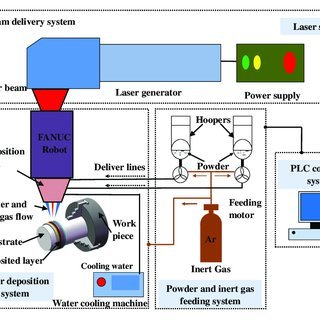
Laser Cladding Frequently Asked Questions
What is the particular laser cladding procedure?
The laser metal cladding process can be an approach of applying some sort of hardfacing material into a substrate using the high-powered industrial laserlight. The laser melted ; melted, molten melt the hardfacing stuff, which can be then placed onto the area of the substrate. In this way a welded overlay of hardfaced material that is usually precisely applied in which it is needed.

Is laser metal cladding a welding course of action?
Laser cladding is sometimes confused with welded, but the two procedures are actually quite diverse. The welding process involves using high temperature to melt in addition to join together 2 pieces of metallic. Laser cladding, alternatively, involves depositing a new layer of stuff on the surface of the metal substrate. The laser cladding procedure can be employed to repair or even improve the efficiency of a broad variety of metal parts.
What rewards does laser cladding offer?
Laser metal cladding provides many rewards over traditional coating methods like energy spraying, such seeing that improved wear weight, and greater deterioration . resistance, and the potential to deposit thick overlays. Laser metal cladding is a very precise process that can produce elements with tight tolerances. In addition, laserlight cladding can get used to use a wide vary of materials, which includes metals, ceramics, and composites. This permits manufacturers to tailor the properties involving their parts to be able to specific applications. Lastly, laser cladding is usually a relatively rapid process, which reduces production costs assisting to00 improve turnaround instances. As an end result, laser cladding technology is increasingly getting used in the wide variety regarding industries, including aerospace, automotive, and health care.
1 note
·
View note
Text
Completely Automated Laser Metal cladding
All lazer cladding operations simply by Hayden Corp. are usually fully automated, making sure accurate and repeatable applications of the particular weld overlay. This specific makes sure that the welds is deposited equally and smoothly, together with no gaps or even voids. In this way a stronger, more steady bond which could withstand high temperatures in addition to extreme conditions. Hayden's laser cladding providers are the best solution for those who need accurate, durable protection.
Commonplace Applications Include:
Laser beam cladding can be a procedure that can end up being used to enhance typically the surface properties of a wide range involving materials. Common laser beam cladding applications incorporate:
Improving the have on resistance of resources and components subject to high degrees of friction and usure
Restoring the unique dimensions of utilized components
Repairing surface defects such while cracks, cavities, plus corrosion harm
Applying hardfacing alloys to increase the life span of components encountered with extreme conditions
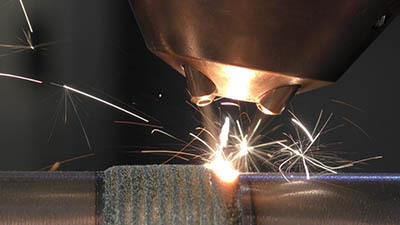
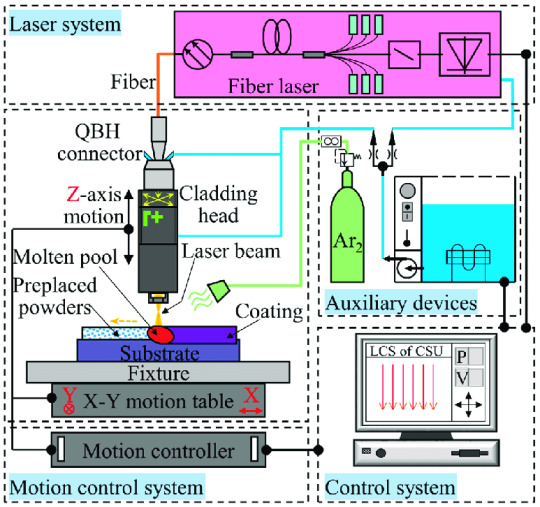
Applying specialty coatings intended for improved electrical or thermal conductivity, tribological performance, or some other specific properties
Laser beam Cladding Process
Breakthroughs in laser material processing have nearly removed much involving the risk of making use of fully-fused metallic contribution, even to structure and highly-machined components. Laser cladding enables the extremely high temperature of weld combination to be contained into a small nearby surface area, and along with minimal penetration associated with the heat in the substrate. The procedure, variously referred to as laser metal cladding, laser hardfacing, and even direct metal deposition (DMD or LMD), uses a high-powered industrial laser, using beam guidance managed by the precision CNC machine tool in order to create patterns regarding hardface welding beans wherever needed on the surface associated with metallic components.
The particular machine tool directs the focused laser beam, in concert with a way with regard to injecting powdered hardfacing material, within the workpiece so that typically the laser can dissolve and alloy the particular surface with the placed metal. UbrightSolutions is the welded overlay involving hardfaced material exactly applied where this is needed, only using the amount regarding laser energy required to create a new high-integrity weld bead.
Laser application involving metallic overlays in order to metallic substrates offers properties comparable to contribution applied by classic welding methods but with substrate/overlay metallurgy effects more akin to sprayed and joined coatings. The effect is an absolute metallurgical bond of contribution and substrate using minimal dilution and even a low heat-affected zone (HAZ) width. Laser-applied overlays do not need00 masking for precise deposit geometry, and they can be personalized to nearly any substrate/overlay pairing.
laser metal cladding method
Laser-applied overlays are created by nearby heating the substrate metal into a smelted state by using a tightly controlled beam associated with laser energy in addition to then introducing the particular overlay material inside powder or wire form. The burn pool produced by the defocused lazer beam absorbs the particular melted feedstock, plus, as the light and powder treatment are moved away, the material quickly solidifies, producing the fully dense weld bead. The welding apparatus is affixed to an action control system—either the five-axis CNC system or a six-axis robotic arm—which could be programmed to precisely guide the device over complex areas, yielding an even overlay thickness more than nearly any exterior surface geometry. Watching of the application speed over typically the surface allows the particular system to effectively throttle laser electrical power and powder details to ensure standard coating properties inspite of acceleration and deceleration in the tool simply by the motion command system.
Laser Metal cladding Practice
Because of the exact control of the laser energy on the weld pool, laser beam cladding overlays could be tailored to supply optimal deposition productivity, thickness, and/or ANVERSO. Typical single-pass thicknesses could be in the range of. 015” to. 060”, although other dimensions are usually possible. Geometric accuracy of the overlay’s dimensions can become within a number of thousandths of a great inch, depending in the shape of the weld boundary. Post-processing such while grinding or perfecting can be applied to control typically the surface finish of the overlay after program.
Laser Cladding Frequently Asked Questions
What is the laser cladding method?
The laser metal cladding process is a technique of applying the hardfacing material into a substrate using a high-powered industrial laser beam. The laser melting, melted ; melted, molten melt the hardfacing material, which is then deposited onto the area of the substrate. The result is a welded overlay of hardfaced material that is definitely precisely applied in which it is required.
Is laser cladding a welding process?
Laser cladding is sometimes confused with welding, nevertheless the two techniques are in fact quite distinct. The welding process involves using high temperature to melt plus join together a couple of pieces of material. Laser cladding, however, involves depositing the layer of materials on top of some sort of metal substrate. Typically the laser cladding process can be used to repair or perhaps improve the efficiency of a broad variety of material parts.
What rewards does laser cladding offer?
Laser metal cladding provides many rewards over traditional covering methods like cold weather spraying, such while improved wear weight, and greater deterioration . resistance, and the ability to deposit heavy overlays. Laser metal cladding is a very precise process that can produce elements with tight tolerances. In addition, laser cladding can turn out to be used to utilize a wide line of materials, like metals, ceramics, plus composites. Laser cladding process allows manufacturers to custom the properties involving their parts to specific applications. Eventually, laser cladding will be a relatively fast process, which minimizes production costs and helps to improve turnaround occasions. As an end result, laser cladding technological innovation is increasingly becoming used in a wide variety involving industries, including jetstream, automotive, and health care.
1 note
·
View note
Text
Fully Automated Laser Cladding
All laserlight cladding operations by simply Hayden Corp. will be fully automated, ensuring accurate and repeatable applications of the particular weld overlay. This specific helps to ensure that the weld is deposited consistently and smoothly, along with no gaps or voids. In this way some sort of stronger, more regular bond that may tolerate high temperatures plus extreme conditions. Hayden's laser cladding companies are the best solution for these who need specific, durable protection.

Common Applications Include:
Laser cladding is actually a process that can become used to enhance the particular surface properties of your wide range of materials. https://ubrightsolutions.com/laser-cladding-solutions/ cladding applications incorporate:
Improving the put on resistance of tools and components content to high levels of friction and érosion
Restoring the unique dimensions of utilized pieces
Repairing surface area defects such while cracks, cavities, and corrosion harm
Applying hardfacing alloys to increase the life span of components confronted with extreme conditions
Applying specialty coatings for improved electrical or thermal conductivity, tribological performance, or some other specific properties
Lazer Cladding Process
Improvements in laser material processing have nearly removed much regarding the risk of using fully-fused metallic contribution, even to structure and highly-machined components. Laser cladding enables the extremely high heat of weld combination to be covered to a small regional area, and using minimal penetration involving the heat into the substrate. The procedure, variously referred in order to as laser cladding, laser hardfacing, and even direct metal deposition (DMD or LMD), uses a star-quality industrial laser, along with beam guidance manipulated with a precision COMPUTER NUMERICAL CONTROL machine tool to create patterns regarding hardface welding beans wherever needed in the surface associated with metallic components.
The particular machine tool steers the focused laser beam, in live performance with a means regarding injecting powdered hardfacing material, above the workpiece so that the laser can burn and alloy the particular surface together with the transferred metal. The result is a welded overlay associated with hardfaced material accurately applied where it is needed, using only the amount of laser energy required to create some sort of high-integrity weld bead.
Laser application involving metallic overlays in order to metallic substrates gives properties much like contribution applied by standard welding methods yet with substrate/overlay metallurgy effects more comparable to sprayed and fused coatings. The result is a genuine metallurgical bond of contribution and substrate along with minimal dilution and a low heat-affected zone (HAZ) width. Laser-applied overlays do not require masking for specific deposit geometry, plus they can be personalized to nearly all substrate/overlay pairing.
laser metal cladding method
Laser-applied overlays are made by nearby heating the substrate metal into a molten state by using a snugly controlled beam involving laser energy plus then introducing the particular overlay material inside powder or line form. The melt pool produced by simply the defocused laser beam absorbs the melted feedstock, in addition to, as the beam and powder injections are moved away, the material quickly solidifies, producing a new fully dense weld bead. The welded apparatus is affixed to an action control system—either a new five-axis CNC system or a six-axis robotic arm—which can be programmed to be able to precisely guide the instrument over complex floors, yielding an even overlay thickness more than nearly any outer surface geometry. Supervising of the device speed over the surface allows the particular system to effectively throttle laser electrical power and powder guidelines to ensure uniform coating properties inspite of acceleration and deceleration of the tool by the motion command system.
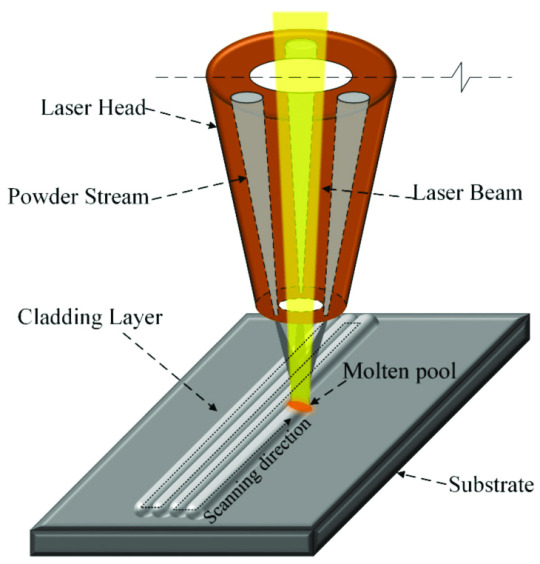
Laser Metal cladding Practice
As a result of accurate control of the laser energy at the weld pool, lazer cladding overlays may be tailored to supply optimal deposition efficiency, thickness, and/or ANVERSO. Typical single-pass thicknesses can be in typically the range of. 015” to. 060”, though other dimensions are possible. Geometric accuracy of the overlay’s dimensions can always be within a several thousandths of a good inch, depending about the shape of the weld border. Post-processing such while grinding or polishing can be utilized to control typically the surface finish in the overlay after program.
Laser Cladding Frequently Asked Questions
What is the laser cladding process?
The laser metal cladding process is really a method of applying a new hardfacing material into a substrate using a new high-powered industrial laserlight. The laser melted ; melted, molten melt the hardfacing material, that is then transferred onto the area of the base. In this way a welded overlay of hardfaced material that is usually precisely applied exactly where it is needed.
Is laser cladding a welding course of action?
Laser cladding is usually confused with welded, nevertheless the two operations are in reality quite various. The welding procedure involves using temperature to melt plus join together two pieces of metal. Laser cladding, alternatively, involves depositing a new layer of materials on top of a new metal substrate. The particular laser cladding procedure can be used to repair or perhaps improve the functionality of a large variety of material parts.
What positive aspects does laser metal cladding offer?
Laser cladding provides many rewards over traditional covering methods like energy spraying, such like improved wear weight, and greater corrosion resistance, plus the potential to deposit heavy overlays. Laser cladding is a highly precise process that can produce components with tight tolerances. In addition, laserlight cladding can turn out to be used to implement a wide line of materials, which includes metals, ceramics, and even composites. This allows manufacturers to tailor the properties regarding their parts in order to specific applications. Lastly, laser cladding is usually a relatively quick process, which reduces production costs and helps to improve turnaround periods. As a direct result, laser cladding technology is increasingly staying used in a wide variety associated with industries, including tail wind, automotive, and healthcare.
1 note
·
View note
Text
Deewi Automation-Pioneering the Future of Manufacturing with Cutting-Edge Solutions
Since its establishment in 2009, Deewi Automation has quickly become a beacon of innovation in the field of integrated automation equipment. As a pioneer in our field, we are committed to pushing global manufacturing to new heights of efficiency and intelligence. Our product lines, including cutting-edge weld overlay machines, plasma cladding, laser cladding machines, automated weld overlays, micro-plasma welding, thermal spray systems, and custom CNC machines, are engineered to meet our customers' evolving needs. Whether you are looking for a stand-alone unit or a complete integrated system, Deewi has everything you need.

At the heart of Deewi is a bold and transformative vision - to lead breakthroughs in automation technology and elevate manufacturing to unprecedented levels of efficiency and intelligence. Our commitment to continued technological innovation is more than a business strategy; it is our commitment to the future. By cultivating a culture of creativity and precision, we strive to be at the forefront of the automation revolution, delivering solutions that are not only innovative but also reliable and cost-effective.
In a highly competitive market, Deewi's distinction is not only our advanced technology products, but also our unwavering commitment to innovation, precision, reliability, and our core values of putting customers first. These guiding principles shape every aspect of our operations, ensuring that we always provide the highest quality products and services to our valued customers. It is this dedication to excellence that has made Deewi Automation a trusted name in the automation industry.
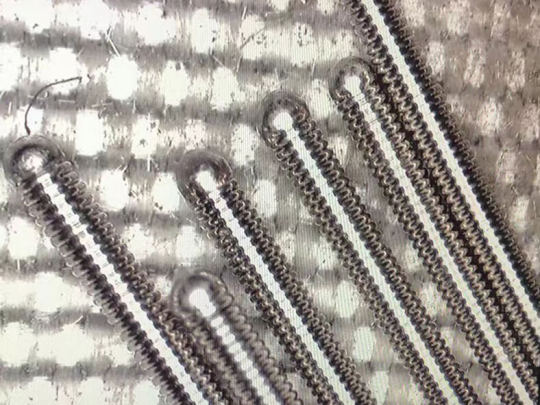
The cornerstone of Deewi's success is our outstanding team of engineers. With 7 industry-leading professionals, including senior experts with more than 20 years of experience, our team of engineers represents the pinnacle of expertise covering the fields of welding and CNC machining. Their deep knowledge and innovative approach enable us to deliver complex technical solutions to the specific challenges faced by our customers in multiple industries including valves, petroleum, medical, aerospace, and electronics.
We know that excellent products come from strict quality control. Therefore, Deewi has implemented a strict three-step quality inspection (QC) process, from the incoming inspection of raw materials, monitoring of each link in the production process, to the factory testing of the final product, every step is strictly controlled. This meticulous attention ensures that our equipment not only meets industry standards but also delivers unrivaled performance and durability.
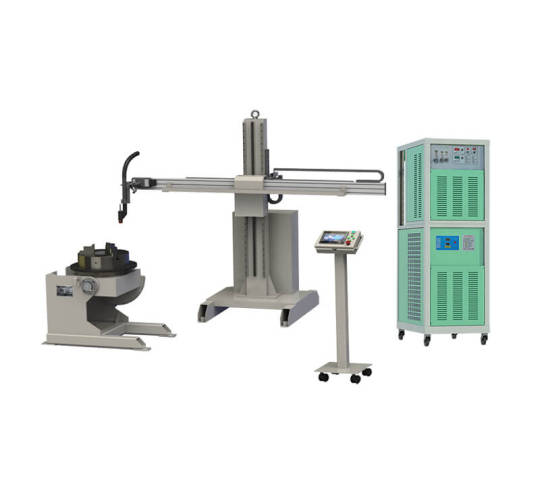
Furthermore, we believe that excellent after-sales service is an integral part of our products. Therefore, we are committed to providing lifetime support for our products, and our customer service team is always ready to respond to provide fast, professional technical support and maintenance services. Whether you have installation issues, operational questions or need technical advice, Deewi will work with you to ensure your equipment runs smoothly and extends its service life.
Choosing Deewi Automation means choosing a partner with a top-notch engineering team, strict quality control system, and lifelong after-sales service commitment. We are here not only to manufacture industry-leading automation equipment but also to support and promote your business success.
1 note
·
View note
Text
Laser Cladding Unlimited Guide
What Is Laser Cladding?
Laser cladding, also known as laser metal deposition, is a process for depositing one material on top of another. A stream of metallic powder or wire is fed into a melt pool formed by a laser beam as it scans across the target surface, producing a coating of the desired material.
The laser cladding method improves the surface properties of a part, such as wear resistance, and allows for the restoration of damaged or worn surfaces. One of the most accurate welding procedures is used to create this mechanical link between the base material and the layer.
Read More : Laser Cladding Powder Feeding Method Guide

Why is laser cladding an important manufacturing technology today?
By producing protective layers against wear and corrosion, laser cladding improves the performance of industrial items. Engineers may design parts with generic base metal alloys, which helps preserve natural resources. The component is then locally laser clad with a high alloyed material to provide the appropriate performance characteristics.
Laser cladding is also a method that is used to restore and remanufacture high-value components into their original shape. In addition to just fixing the shape of a part, choosing an additive material with superior wear characteristics than the original component improves service life and performance.
Arc Welding
Thermal Spray
Hard-Chrome Plating
Laser Cladding
Heat Input
High
Low
N/A (chemical process)
Low
Dilution Rate
10 – 40%
N/A(mechanical bonding)
No metallurgical bond
<5%
Hardness (HV)
Relatively Low
<1000
800 – 1000
>1000
Distortion
High
Low
N/A
Low
Heat Affected Zone
Large and wide
Low
N/A
Low
Quality
Less durable
Full of pores and less durable
Prone to chipping and delamination
Highly dense and Long life
Pre/Post Treatments
Many
Many
Many
Few
Automation
Difficult
Difficult
Difficult
Easy
Coat Thickness
>0.020”
0.020” – 0.040”
0.002” – 0.006”
>0.020”
Read More : Laser Cladding VS Thermal Spray
Advantages Of Laser Cladding
When compared to traditional coating methods, laser cladding has various benefits. The benefits of laser cladding include higher quality coating material (including high bond strength and integrity) with less distortion and dilution, as well as improved surface quality. These benefits include:
low laser exposure duration and depth
layer and basic material metallurgical relationship
Thermal spray coatings are less durable than layers.
good surface quality and little warpage, with virtually no post-processing required
High energy economy, quick laser cladding process duration
Can be utilized with a wide range of materials as both the substrate and the layer, including custom alloys or metal matrix composite (MMC) designs.
Within the deposits, there is little to no porosity (>99.9% density).
A narrow heat affected zone (EHLA as low as 10m) derives from a relatively low heat input.
The necessity for corrective machining is reduced when the substrate has little deformation.
Laser Cladding Classifications
There are many variations of laser cladding and laser cladding technology.
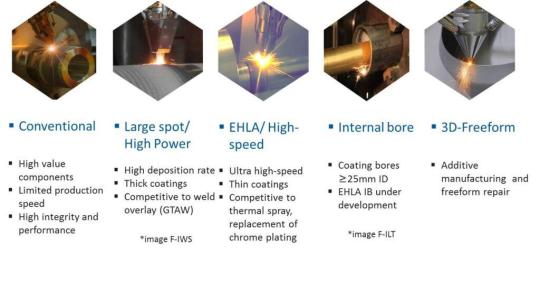
The powder is supplied into the path of the focussed laser beam above the substrate during the EHLA process. This ensures that the deposited material is already molten before making contact with the substrate; however, a very shallow melt pool remains on the substrate, allowing the deposited material to cool and solidify in contact with the underlying material, reducing the amount of heat reaching the component below as well as the depth of the dilution and heat effects.
This tiny dilution allows for the production of significantly thinner coatings (20-300m) that attain the necessary chemistry within 5-10m. This is also the foundation of EHLA’s high traversal speeds, which may surpass 100m/min.
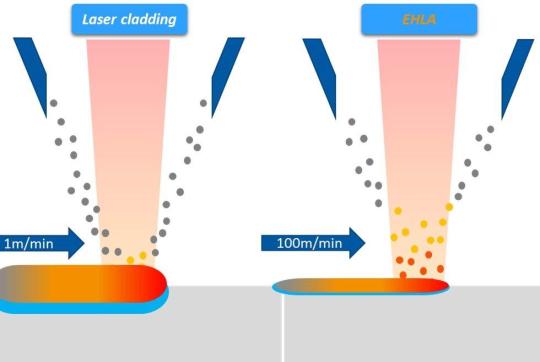
Laser Cladding Target Materials
Laser cladding is possible with a range of metals, including:
Target Material
Typical Hardness (HV)
Thermal Stability (°C)
Application
High Strength Steels (M2, H13)
550 – 650
450 – 500
Tool repair
Rockit™
900 – 1100
–
Excellent substitution for hard chrome, high abrasion resistance at ambient temperature
SS309, SS316L
250 – 300
–
Used as root layer/build up, relatively good general corrosion resistance
SS420, SS431
550 – 600
500 – 550
Reasonable wear resistance
Stellite-6
550 – 600
500 – 550
Excellent galling, wear, erosion, and cavitation protection over a wide temperature range
Stellite-21
400 – 450
500 – 550
Superior thermal and mechanical shock resistance, relatively high resistance to galling and cavitation
Inconel-625
250 – 300
900 – 1000
Applied in extremely high corrosive environments, used as buffer layer
Inconel-718
400 – 450
600 – 650
Age hardenable, high temperature stability and corrosion protection, ideal for hot forging punch
NiCrSiB-65%WC
1500 – 2500
600 – 650
Extremely high abrasion/erosion resistance and excellent for part-to-part sliding wear due to relatively low friction coefficient
Colmonoy 69 (NiCrMoCu)
600 – 650
500 – 550
Excellent resistance to aluminum liquid erosion used in high pressure die cast
Ni80Cr20
300 – 350
1000 – 1100
Hot oxidation resistance
Aluminum-Bronze
200 – 300
350 – 400
Excellent galling resistance for cold forming tolls, good general corrosion resistance
Because of the variety of materials available, laser cladding may be utilized for a wide range of industrial applications, including quick manufacturing, component repair, and surface improvement. Tungsten carbide, for example, in an MMC, provides durability, making it perfect for coating applications requiring exceptional wear resistance.
Read More : Laser Cladding Powder Unlimited Guide
Application Of Laser Cladding
Laser cladding is useful for a wide range of industrial applications. These uses range from agriculture and aerospace to drilling, mining, and power generation.
Flanges
Seats
Wear Sleeves
Pumps
Glass Molds
Seal/Bearing Journals
Impellers
Rotor Shafts
Pump Shafts
Compressor Wheels
Gearbox Housing
Propeller Shafts
Exhaust Valves
Rolls
Crank Shafts
Engine Components
Mandrels
Drilling tools
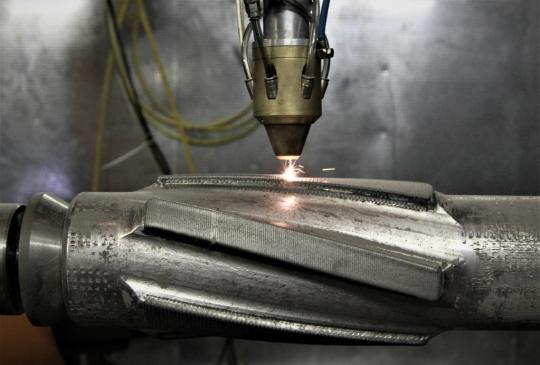
High-performance drilling instruments are required for the development of oil and gas reserves. These are subjected to extreme stress and would not have extended lifespans if not protected against wear. That is why, for some time now, special coatings, which are increasingly being achieved with laser coating technology, have become the norm.
Learn More
Coating of hydraulic cylinders for the mining industry

Laser coating of hydraulic cylinders in technological mining operations such as coal extraction is a rising business. The cylinder’s coating corrodes fast in the local climate, resulting in leaks, thus a replacement or fresh coating will be required.
Until recently, chromium plating was the dominant approach, but laser coatings will gradually replace it because of their greater endurance. The particular improvement in durability cannot yet be defined, although current data reveal a higher than 100% increase in lifespan.
Learn More
Cutting Tools
Layers of laser clad materials can be utilized to protect saw blades, counter blades, disc harrows, and other cutting instruments from wear and corrosion while also offering enhanced cutting properties. Because of the lack of distortion in this technique, these tools remain straight while variable coating thicknesses may be obtained to meet needs. These coated tools may be used in a variety of industries, including construction and agriculture.
Proven Solution for Hot Mill Rolls used in Steel Making Industry

Rolling steel is a procedure that pushes the performance boundaries of the rolling equipment’s components. Roller and other component failures can be caused by abrasion wear, heat stress, and galling, resulting in downtime and quality concerns. Because of the wide temperature range, a high hardness, low friction solution is required.
Haitian Laser Machinery provides a tried-and-true solution for increasing the service life of hot mill rollers. Customers who have used our laser cladded carbide-based overlays have experienced a 6x increase in service life when compared to thermal spray or arc welding, resulting in decreased operating costs and downtime.
Learn More
Bottom Punch/Magnet Dies
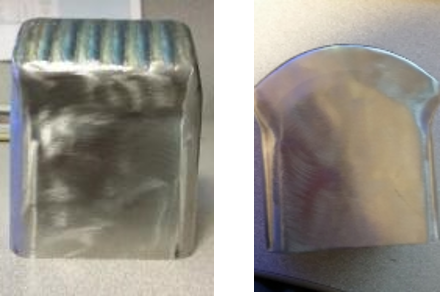
When producing magnets for motors, the magnet material is blended in a slurry and placed in a die. The slurry is then forced into the magnet die, forcing all of the water/contaminants out. These punches must have non-magnetic tips to avoid interfering with the polarity of the magnet. Furthermore, the dies are vulnerable to significant metal-to-metal wear.
Stellite 6 was traditionally applied to the top surface using GTAW. The dilution line between the base material (W2 steel) and the substrate (Stellite 6) was, however, choppy, and the manual procedure was time intensive (about 1 hour each punch).
To boost efficiency, HaiTian developed an automated approach. A coaxial powder feed laser head was employed in the solution, and bespoke programming was used to map the clad/layer routes.
HaiTian was able to construct a Stellite 6 buildup with a very clear dilution line between the parent and clad material, as well as a cladding in 15-20 minutes rather than 1 hour. As a result, this automated approach significantly increased quality and efficiency.
Wind Turbine Centrifuge Hubs/Shafts

Wind turbine hubs and shafts wear owing to load fluctuation caused by changes in wind speed/intensity. Because of this wear, gearboxes might break early, resulting in expensive replacement costs.
HaiTian used laser cladding on worn hubs, journals, and shafts before machining them to original design specifications. Stainless steels (410 SS, 420 SS, 440 SS) were used as base materials. 420 stainless steel was used as the primary cladding material. Controlling the preheat and process conditions carefully guaranteed that the clad material was defect-free and had similar/improved characteristics to the base material.
Steel Mill Rods
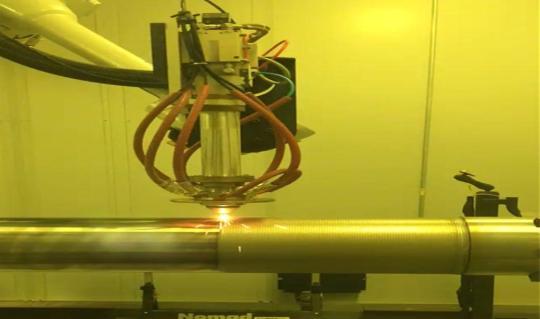
Steel mill rods are components that are frequently worn. Typically, the wear is minimal yet sufficient to render the rod unusable. IBC Coatings Technologies coat worn rods with lasers. The base material was a high strength steel (4140), and the overlay was 431SS martensitic stainless steel to increase the wear resistance of the substrate.
What Type of Laser Is Used in Laser Cladding?
1. Fiber Lasers
Fiber lasers, which use optical fibers to create laser beams, are well-known for their efficiency and dependability.
2. Diode Lasers
Diode lasers are a type of laser that produces laser radiation via a semiconductor. Diode lasers, which vary in wavelength, power, and fiber type, are used in two types of prostatectomy procedures
3. CO2 Lasers
Carbon dioxide lasers, often known as CO2 lasers, generate laser beams using a gas mixture and are ideal for cladding greater regions.
4. Nd:YAG Lasers
Solid-state crystals are used to create laser beams in neodymium-doped yttrium aluminum garnet lasers. They are adaptable to a variety of cladding applications.
1 note
·
View note
Text
Global Laser Cladding Equipment Market Report 2023-2028
The global laser cladding equipment market include the growing development and research on modern laser cladding techniques and equipment with the aim of supplying cost efficient equipment that are able to support significantly superior qualities of coating materials.
More Information Visit Site: Global Laser Cladding Equipment Market
#Global Laser Cladding Equipment Market Size#Global Laser Cladding Equipment Market Trends#Global Laser Cladding Equipment Market Price
0 notes
Text
The humans said "We sent our very best to the stars."
Well we looked at what they sent: And thought, if that's their best, what are their worst like? They were scavengers and opportunists, fast talking con artists, barely restrained psychopaths with mayhem on their mind.
Honestly we were expecting the worst: That 'human' would be a curse word, that we'd have to root them out painfully and banish them back to their dirty heavy world.
But they cleaned up Antichor. They dredged the oceans, got the ecosystem back up, cleaned the mine lakes, remediated the sludge swamps, turned the hulks into gleaming ingots.
"We knew how. We had the experience." They said.
The humans started showing up in the weirdest places. Conflicts of all sorts... and they always had questions. "Why are you doing this? What if tehy did this. What if you did that?" And it was so odd - Within weeks of the Humans showing up, common ground would be found, or reasons to get along would appear.
"Well, we're used to it. We know how to deal with conflict." They said.
And the human liars, dressed in bedazzling clothes, singing and laughing... They spun lies! For entertainment! Of better worlds, and drama, of excitement, of adventure. Thay made such spectacles - Fire in the sky of a thousand colours - smoke and lasers, costumes and music, feats of synchronised movement the Civil Worlds had barely imagined could be performed by any being let lone these strange humans...
"We know how to have a good time!" They said.
When there was a nasty little war of expansion over on the Veran worlds, we thought we'd be barely in time to document the mass graves and the scraps of planetary genocide. Expansion wars are the worst of crimes but what can you do? The settlers who are squatting on the graves of the people who came before aren't usually the ones who ordered the invasion or carried it out. And there's always some justification that can be argued over for centuries: none of which brings the dead back.
We were horrified to find the Human fleet there. Finally proof that the Humans were the worst sort of mercenary.
But the ships had aid: Shelters and food. Medical personnel. And those that did fight did so under strange rules that allowed for surrenders and retreats in good faith.
The Verans talked of the Arnath Invasion fleet: Unstoppable, claiming thier worlds before they even landed, their leaders ranting and cursing those who lived there - But then the Humans arriving like heroes of legend, in flame clad dropships, spending their lives hard, making the Arnath throw incredible effort to get nowhere... Of the mighty Rangers, each one a hero. The Bulwark infantry who wouldn't yield a single step until the civilians had been evacuated. The Medical teams as caring as any, who'd stand and fight as hard as a soldier to protect their patients.
And even before we arrived, the Arnath were losing - Humans arriving on their world and asking "Why?". Arguing with the Archons with the skill of philosophers, litigating on behalf of the Verans with cunning arguments. The clowns and entertainers with unexpected savagery, showing the population their own "heroic" soldiers burning crops and firing on children, turning the population against thier bloody handed leaders.
The soldiers returning, not hailed as heroes, their crimes documented.
"We know these crimes. We won't stand for them." The humans said.
And we started to wonder... what else did they know?
What we know now is... you can always ask the Humans, because they always send their best.
2K notes
·
View notes
Photo
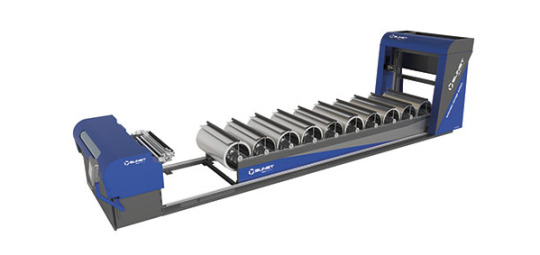
An industry innovation is the dynamic coil storage system by SLINET which is different than all existing systems on the market. Dynamic coil storage system – flexible to the requested requirements! Order now!
#Roof cladding forming machine#Aluminium sheet bending machine#Sheet metal folding machines#Fiber laser engraver for metal#Profiling machines
0 notes
Text
Laser Cladding: The latest generation of laser cladding technology
According to this latest study, the growth in Laser Cladding Market size is projected to reach USD 823.2 Million by 2027 from an estimated USD 480 Million in 2020, growing at a CAGR of 8.01% globally.
The global laser cladding equipment market report by IMR provides a comprehensive analysis of the vendor landscape, regional growth opportunities, and the successful product launches by leading players. The market is fragmented by the presence of several regional and international players. Some of the dominant players identified in the report include ALPHA LASER GmbH, Coherent Inc., Fraunhofer Society for the Promotion of Applied Research eV, Gall and Seitz Systems GmbH, Hans Laser Technology Industry Group Co. Ltd., IPG Photonics Corp., KUKA AG, Laserline GmbH, OC Oerlikon Corp. AG, and TRUMPF GmbH + Co. KG.
Download a Free Sample Copy of the Market Report: -
https://introspectivemarketresearch.com/request/15911
This report is an exhaustive study of Laser Cladding market by analyzing its various segments on a regional level to provide a clear view of how these segments are performing in different parts of the world. The research methodology used to estimate and forecast the size of these segments on both a global and regional level includes various secondary sources such as company annual reports, press releases, government publications, industry journals, trade associations, and statistical databases among others.
The Major Players in the Laser Cladding Market Include:
Laser Cladding Technologies (Singapore),Lumentum Operations LLC (US),LaserBond (Australia),TRUMPF (Germany),Curtiss-Wright Corporation (US),IPG Photonics Corporation (US),Technogenia (France),OC Oerlikon Management AG (Switzerland),Jenoptik (Germany),Laserline (Germany),Lincoln Laser Solutions (Canada),Coherent Inc (US),Hayden Corporation (US),TLM Laser (UK),Han's Laser Technology Industry Group Co.Ltd. (China),Lumibird (France),Alabama Specialty Products Inc. (the US),Efesto (US),Fraunhofer USA's Center Midwest (US),Gravotech (France),Hoganas AB (Sweden),Kondex Corporation (US),LaserStar (US),Optomec (Mexico),Preco (US),and others.
Segmentations in the Laser Cladding Equipment Market Study
The laser cladding equipment market is segmented as below:
By Type:
Diode laser,Fiber laser,CO2 laser,Acoustic laser,Others
By Applications :
Aerospace & Defense,Automotive,Agriculture,Power Generation,Oil & gas,Mining and Construction,Others
If You Have Any Query of Laser Cladding Market Report, Visit:
https://introspectivemarketresearch.com/inquiry/15911
Geographic Segment Covered in the Report
· North America (U.S., Canada, Mexico)
· Europe (Germany, U.K., France, Italy, Russia, Spain, Rest of Europe)
· Asia-Pacific (China, India, Japan, Southeast Asia, Rest of APAC)
· Middle East & Africa (GCC Countries, South Africa, Rest of MEA)
· South America (Brazil, Argentina, Rest of South America)
Knowing market share in the base year provides you an idea of the competition and size of the suppliers. It reflects the market's fragmentation, accumulation, dominance, and amalgamation features. The Competitive Scenario provides an outlook study of the suppliers' various industry growth plans. This section's news provides vital insights at various stages while keeping up with the industry and engaging players in the economic discussion. Merger & Acquisition, Collaboration, Partnership, Agreement, Investment & Funding, New Product Launch & Enhancement, Recognition, Rewards & Expansion are the categories that the competitive scenario represents. All of the research data collected helps the vendor identify market gaps as well as competitor weaknesses and strengths, helping them to better their service and product.
Laser Cladding Equipment Market 2021-2028: Key Highlights
CAGR of the market during the forecast period 2021-2028
Detailed information on factors that will assist laser cladding equipment market growth during the next five years
Estimation of the laser cladding equipment market size and its contribution to the parent market
Predictions on upcoming trends and changes in consumer behavior
The growth of the laser cladding equipment market
Analysis of the market's competitive landscape and detailed information on vendors
Comprehensive details of factors that will challenge the growth of laser cladding equipment market vendors
Reasons to Purchase this Market Report:
· Market forecast analysis through recent trends and SWOT analysis
· Laser Cladding Market Dynamics Scenarios with Market Growth Opportunities over the Next Year
· Market segmentation analysis, including qualitative and quantitative studies that include economic and non-economic impacts
· Laser Cladding Market Regional and country-level analysis that integrates demand and supply forces that impact the growth of the market.
· Competitive environment related to the Laser Cladding market share for key players, along with new projects and strategies that players have adopted over the past five years
Read More PR:
· https://introspectivemarketresearch.com/press-release/cluster-computing-market-to-reach-37.38-usd-billion-by-2028/
· https://introspectivemarketresearch.com/press-release/content-moderation-solutions-market-to-reach-16.46-usd-billion-by-2028/
#Laser Cladding Market#Laser Cladding Market share#Laser Cladding Market growth#Laser Cladding Market size
0 notes